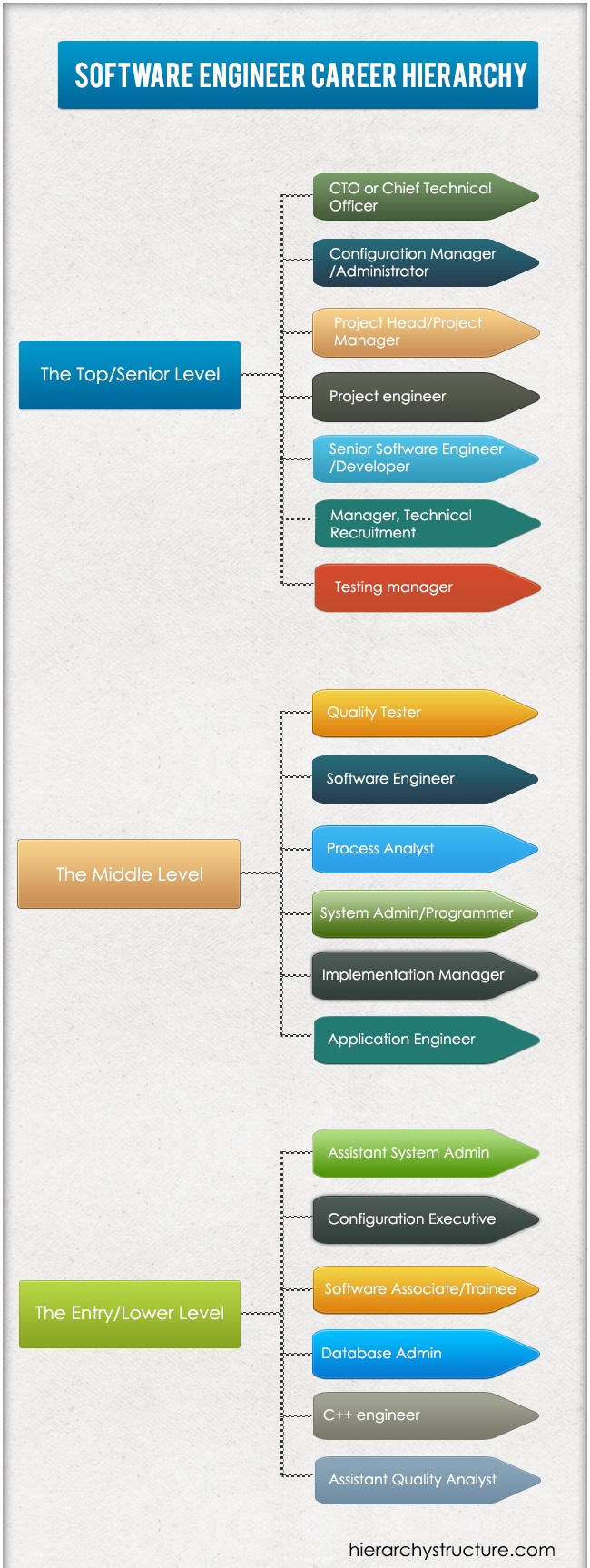Imagine counting cash manually at a counter in a modern trade retail outlet. The result would be disastrous and the customers won’t turn back to the store. The products and services offered by the IT industry have added value to millions of lives especially with technological progress with the onset of the new millennium. Time again software engineers have analyzed consumer needs in respect of IT equipments like computers, notebooks, mobile phones, iPods, and smart phones and so on.
The software engineer career hierarchy strives to come up with even better solutions to problems users face in their operations by enhancing or upgrading the existing softwares or developing newer ones. The value added by the software engineers benefit individuals and businesses alike.
There are diverse roles and responsibilities that need to be carried out in an organization of software engineering. They include decision making and implementing the corporate policies in light of the softwares to be developed or improved. Broadly, the software engineer career hierarchy can be categorized under three heads as follows:
A. The Top/Senior Level
This is a strategic unit which comprises technical people with the requisite market knowledge who take decisions regarding the business plans to be implemented. These people also decide upon the growth path of the company, the projects to be undertaken in the best interest of stakeholders, etc. The Engineering job titles in this level are:
- CTO or Chief Technical Officer
- Configuration Manager/Administrator
- Project Head/Project Manager
- Project engineer
- Senior Software Engineer/Developer
- Manager, Technical Recruitment
- Testing manager
On a general note, personnel in these profiles ensure the viability and profitability of the projects undertaken in addition to determining that the softwares have that technical edge over others.
B. The Middle Level
The personnel under this hierarchical level are engaged in assessing and evaluating the quality of the softwares developed in light of the market requirements. They coordinate the activities of the developers and ensure that the targets are met with the given resources. The profiles include:
- Quality Tester
- Software Engineer
- Process Analyst
- System Admin/Programmer
- Implementation Manager
- Application Engineer
C. The Entry/Lower Level
This level of the organization consists of those technicians and experts who are specialized in performing certain tasks pertinent to software development. For instance, a fresh graduate and an expert in C++ programming puts his IT skills to use to develop newer versions of softwares. The job titles are:
- Assistant System Admin
- Configuration Executive
- Software Associate/Trainee
- Database Admin
- C++ engineer
- Assistant Quality Analyst
These above mentioned profiles are highly interdependent and the segregation varies from one organization to another where the software engineer career hierarchy and some of its profiles are clubbed under one head under a particular level.
The software engineer career hierarchy consists of levels which are interdependent and need to be coordinated properly in order to develop the better softwares.

